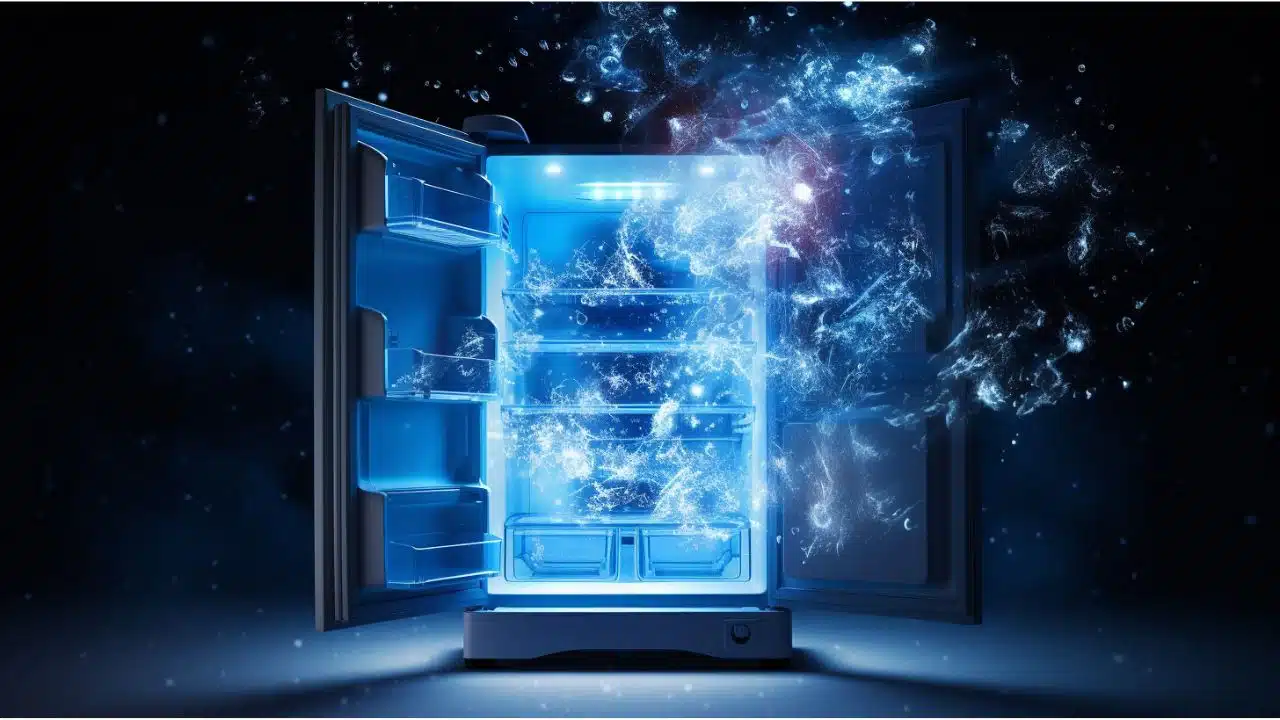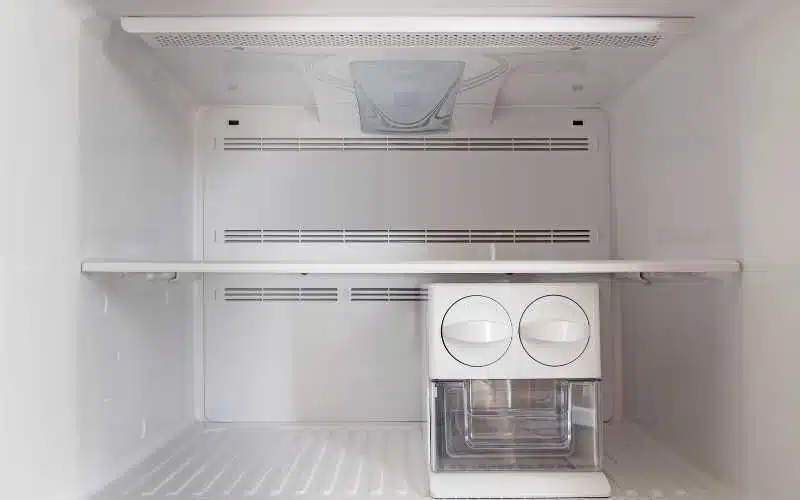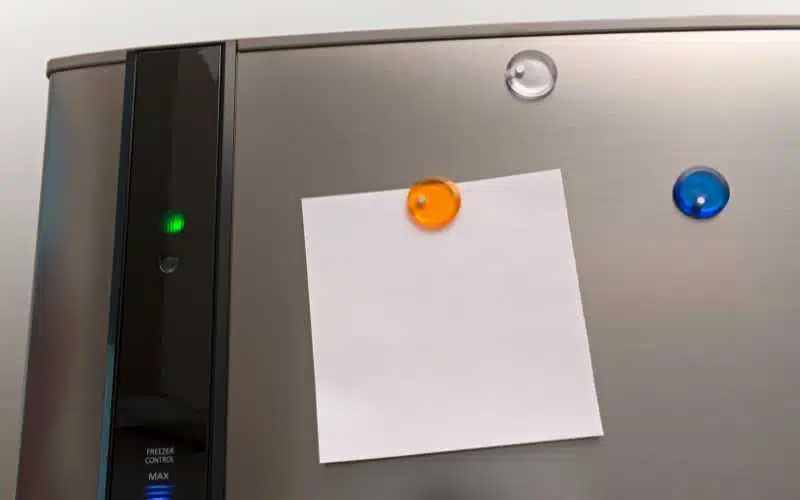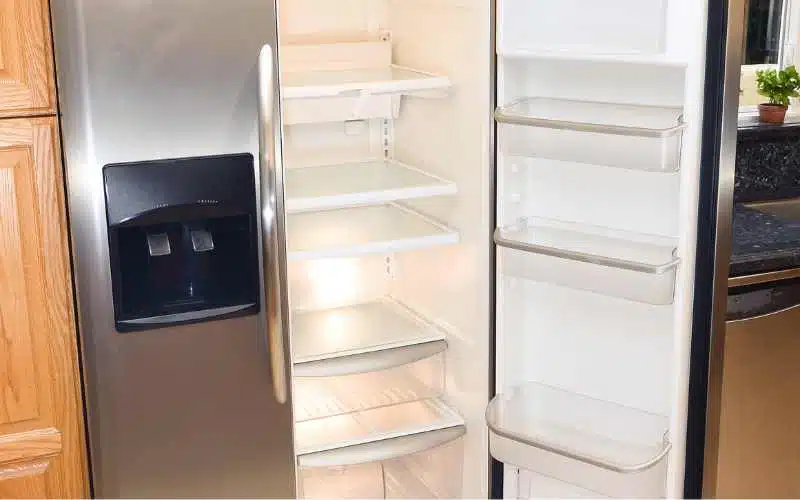Kenmore refrigerators use a small but mighty part called a fuse. This fuse keeps your food cold and fresh. If it stops working, your fridge might too! Let’s find out how these fuses play a big role in keeping our meals safe.
Key Insights: Thermal Fuse in a Refrigerator
- Primary Function: Acts as a safety device, preventing overheating by cutting off power to the fridge when excessive heat is detected.
- Operation Mechanism: The fuse opens the thermal circuit when heat is detected, halting current flow and thereby protecting the fridge’s components.
- One-Time Use: Once activated, a thermal fuse cannot reset and must be replaced for continued protection.
- Fuse Location in Kenmore Fridges: Typically found at the rear bottom or near the compressor; detailed diagrams are available in the operator’s manual or online.
- Replacing a Fuse: This involves disconnecting power, locating the fuse using the manual, testing for continuity, and installing a new fuse matching the circuit specifications.
- Indicators of a Faulty Fuse: Fridge stops cooling, evaporator frost, or signs of overheating and short circuits.
- Fridge Light and Fuse: If the fridge light fails, check the fuse, door switch, and light bulb socket for issues.
What Does a Thermal Fuse Do in a Fridge?
A thermal fuse acts as a safety device inside your fridge. It opens circuits to stop your fridge from overheating.
Imagine if your fridge got too hot because of an electrical problem. The thermal fuse senses that extra heat and cuts off the power to protect the fridge’s components.
This happens when the current passes through a special part, the moving contact, and then travels through the thermal fuse’s metal shell to the other side.
It’s a one-time deal—once the thermal fuse activates, it won’t reset when things cool down.
Here’s how it works:
- Current flows to the moving contact.
- Heat is detected, then the thermal circuit opens.
- Power to the fridge is cut to prevent damage.
Your fridge has other parts, like a compressor and evaporator, working to keep everything cool. The thermal fuse ensures these don’t face the risk of overheating.
Remember, the thermal fuse is a permanent safety measure. It requires replacement if it ever activates to keep your fridge running safely and effectively.
Kenmore Refrigerator Fuse Location?
Finding the fuse in your Kenmore fridge is easy! It’s usually at the back bottom or next to the compressor. Sometimes, it’s hidden inside, behind the paneling.
If you’re stuck, check your fridge’s manual. It has pictures showing where the fuse is. Or, you can look online for step-by-step guides with images.
Kenmore Refrigerator Features:
- Water Filter: Essential for removing impurities and ensuring a fresh taste for your water and ice.
- Filter Replacement: Replace your water filter every six months to maintain water quality.
- Compatibility: Works seamlessly with Kenmore Elite freezers.
Remember, no plumbing is required to change the water filter, making it a hassle-free maintenance task you can do yourself.
How do You Change a Fuse in a Refrigerator?
- Disconnect Power: Unplug the refrigerator or switch off the circuit breaker to cut the power supply.
- Locate Manual: Find the refrigerator manual. It will guide you to the main control board.
- Identify Fuse: Within the control board, spot the electrical fuse—often a cylindrical glass or ceramic tube.
- Testing: Use a multimeter to test the fuse for continuity.
- Replacements: If faulty, buy a replacement that matches the circuit specifications in the manual.
- Install: Carefully replace the old fuse with the new one, reconnect power, and test the refrigerator.
How to know when the fuse is bad?
If your refrigerator abruptly stops cooling and the evaporator is covered in frost, you might have a blown fuse.
When your fridge is not performing correctly, it’s essential to check the fuse. Here’s how you can identify and fix a blown fuse.
Signs of a Blown Fuse:
- The refrigerator stops cooling or is not as cold as usual.
- You may notice the evaporator is completely frozen.
Check for Overheating and Short Circuit Issues:
- Overheating in appliances can cause significant damage and lead to a short circuit.
- During a power surge, excessive current might flow, leading to a blown fuse to prevent a fire.
Safety First:
- Always unplug your refrigerator before starting your inspection to avoid the risk of electrocution.
Tools You’ll Need:
- Zip ties
- Flat-head screwdriver
- Phillips head screwdriver
- Wire cutters
Last update on 2024-01-12 / Affiliate links / Images from Amazon Product Advertising API
Last update on 2024-01-12 / Affiliate links / Images from Amazon Product Advertising API
Last update on 2024-01-12 / Affiliate links / Images from Amazon Product Advertising API
Last update on 2024-01-12 / Affiliate links / Images from Amazon Product Advertising API
Instructions:
- Locate the main control board of your fridge. Use the Phillips head screwdriver to remove the screws.
- Gently pry open the paneling with the flat-head screwdriver to reveal the thermal fuse.
- If zip ties are present, carefully cut them with wire cutters – don’t rush to prevent damaging any wires.
- Unclip the old fuse. Check for any signs of wear or damage before installing a new fuse.
Replacing the Fuse:
- Connect the new fuse using the plastic clips to secure it in place.
- Although not mandatory, using zip ties to organize the wires can be helpful.
Inspect your refrigerator power cord regularly for any visible signs of wear like fraying. For your safety and the appliance’s longevity, promptly replace the power cord if it looks worn.
Remember, maintaining the correct function of your refrigerator is key for it to run efficiently. If you’re ever uncertain, seek professional help to ensure the best care for your appliance.
Do Fridge Lights Have Fuse?
Your fridge light might not turn on even if your fridge seems fine. This could mean your fridge light fuse has blown or the bulb is burned out and needs replacement.
When your refrigerator light doesn’t work, the first step should be to locate and check the fuse box.
If the bulb is still good and the power outlet isn’t the issue, consider the refrigerator door switch.
The door switch controls the voltage to the bulbs; it needs to be functional for the light to work when you open the door.
Most refrigerator models have the door switch on the fridge’s interior edge.
- To test the door switch:
- Carefully remove the switch.
- Use a multimeter to check for continuity.
Usually, this is a “normally closed” switch, meaning it should show continuity unless pressed.
If it doesn’t, you need a new door switch. Another potential problem is the light bulb socket itself. It’s where the light bulb connects to the fridge’s electrical system.
- Signs of a defective light bulb socket:
- Discoloration
- Bent terminals
- Damaged wires
Remember to always unplug your fridge before any inspection to avoid electrical hazards.
If you see any signs of damage on the socket, it might need cleaning or possible replacement to get your fridge light working again.










